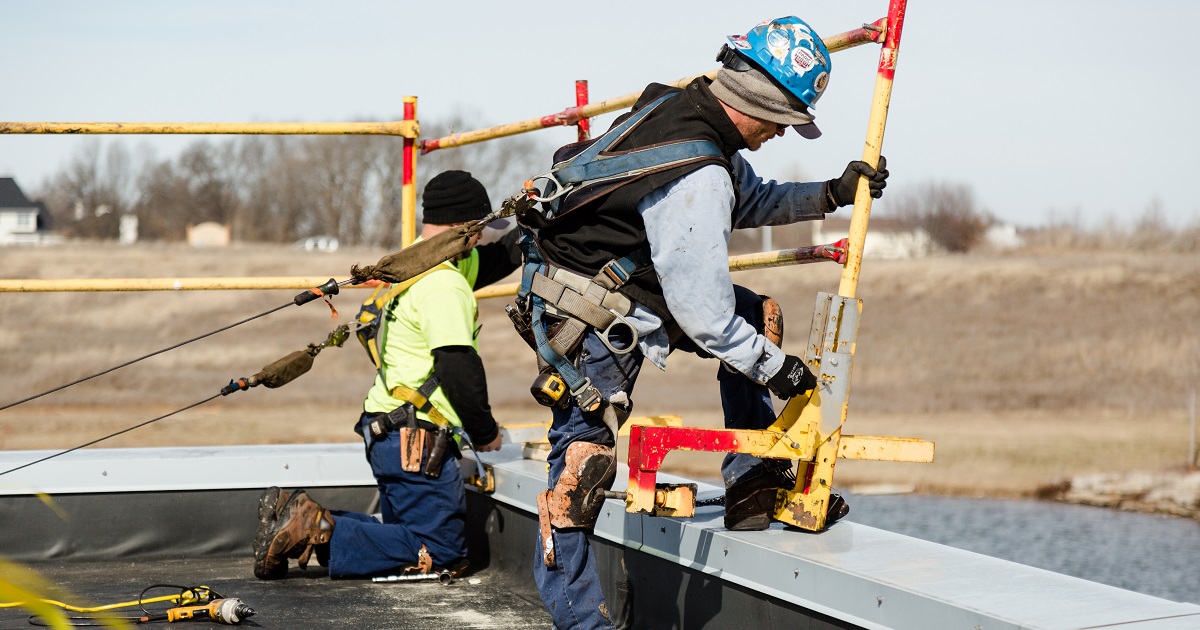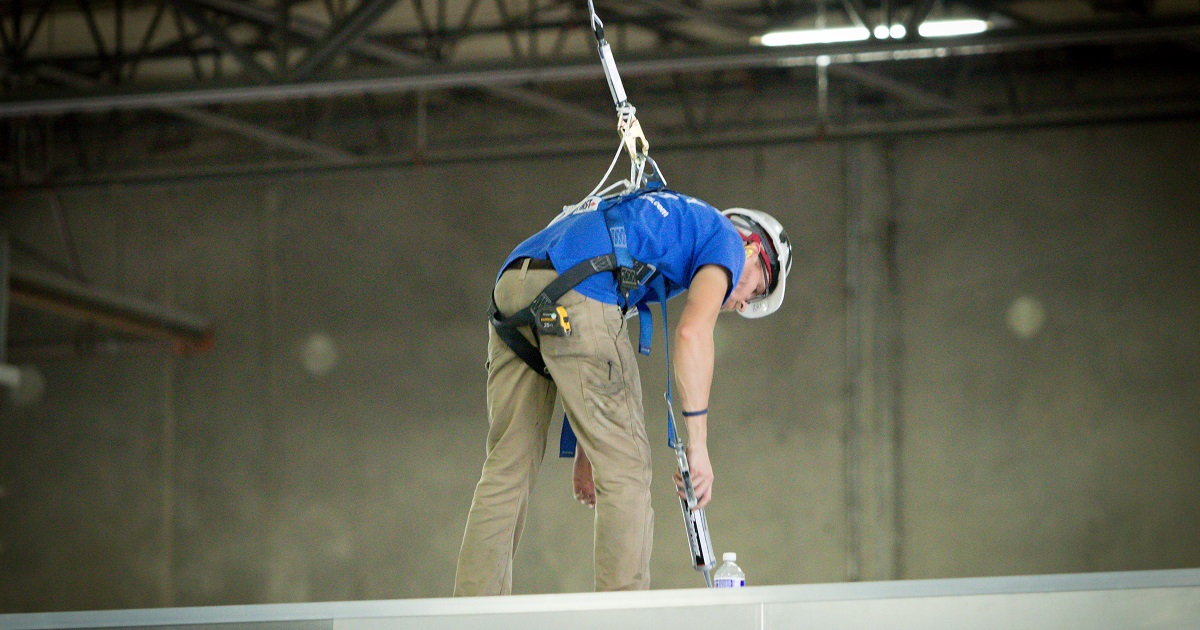Slips, trips and falls are some of the leading causes of workplace injuries year after year. In 2018, they accounted for 28% of MEM’s lost-time claims and cost about 35% more than the average claim. These incidents can be prevented with the right education and consistent safety practices. Here’s what you can do to prevent falls at work or on the job site.
Slips, trips and falls can be prevented with the right education and consistent safety practices. Tweet this. >
Falls from heights
Slips, trips and falls have high severity, meaning they cost more than the average workers compensation claim. Falls from an elevation are the most severe cause of injury within the slip, trip, fall category, and the Bureau of Labor Statistics recently reported that fatal falls have reached a 26-year high.
One misstep while working on a roof can change an employee’s life forever. That’s why it’s crucial to educate employees about fall risks and how to prevent falls at work. Here are some best practices to start in your workplace today:
- Have a written fall protection policy and enforce it
- Provide hands-on training
- Make using protective equipment easy
Learn more about preventing falls from heights in this Claims Wire article.

Ladders last
A fall from a ladder can be just as serious as a fall from a roof – and workers using ladders may take fewer precautions because the work seems harmless. Because falls from ladders are a common cause of injury, though, you should encourage employees to take ladder use seriously on your job sites.
Turner Construction, a company with more than 10,000 employees, implemented a Ladders Last policy in its Ohio offices in 2012. The policy challenges employees to exhaust other equipment options before using a ladder to complete a task. At first, it was difficult to imagine what a construction operation would look like without the daily use of multiple ladders. However, within five years of implementing the policy, Turner’s Ohio offices had all but eliminated ladder incidents and seen a productivity boost as well.
Alternatives such as scaffolding, scissors lifts, platform ladders and personnel hoists are often safer and allow employees to easily keep tools and materials nearby. If you must use a ladder, follow these safety tips:
- Never stand on chairs, buckets or crates
- Choose the right type and size of ladder for the job
- Do not over-reach – keep your belt buckle inside the rails
- Maintain three points of contact when ascending and descending
Find more ladder safety tips in this Tool Box Talk.
Slip and trip hazards
What’s the difference between a slip and a trip? A slip is caused by a loss of friction between your footwear and the floor. A trip is caused by a physical obstacle – like the edge of a rug, a loose tile or cracked sidewalk – that prevents you from completing your step.
While slips and trips don’t carry the high severity of falls from heights, they are very common. They can also lead to more serious injuries than you might think, including fractures, shoulder dislocations, torn ligaments and sprains.
Tips to prevent falls from slips:
- Inspect floor surfaces often and clean up hazards
- Place warning signs in damp or wet areas
- Maintain good lighting in dark areas
- Wear proper footwear for the environment
- Take extra care during icy or snowy weather
For more, download this Tool Box Talk.
Tips to prevent falls from trips:
- Keep walkways clear of hazards
- Maintain good lighting in dark areas
- Pay attention and avoid texting while walking
- Repair significant cracks and gaps in concrete
- Inspect work areas for loose cords and cables
- Keep your path of vision clear when carrying items
- Use handrails on stairs
For more, download this Tool Box Talk.
Proper footwear
One of the easiest ways to protect yourself against slips, trips and falls is to wear appropriate footwear. The right shoes can help you maintain friction with surfaces and protect your feet. For any job, it’s a good idea to wear slip-resistant shoes that support your ankles and arches. Check out this poster for more on proper footwear.
Prevent falls at work
Many slip, trip and fall incidents can be avoided by paying close attention and consistently taking the required precautions for a job. When employees become complacent on the job site or get in a hurry, they may be more likely to forego protective equipment or neglect to properly mark hazards.
Make sure your employees understand that you expect them to follow safety protocol every single time, no matter what. Conduct frequent Tool Box Talks with your teams to remind them about procedures and keep the importance of safety fresh in their minds.
For Tool Box Talks, posters and more, visit our free safety resource library.
